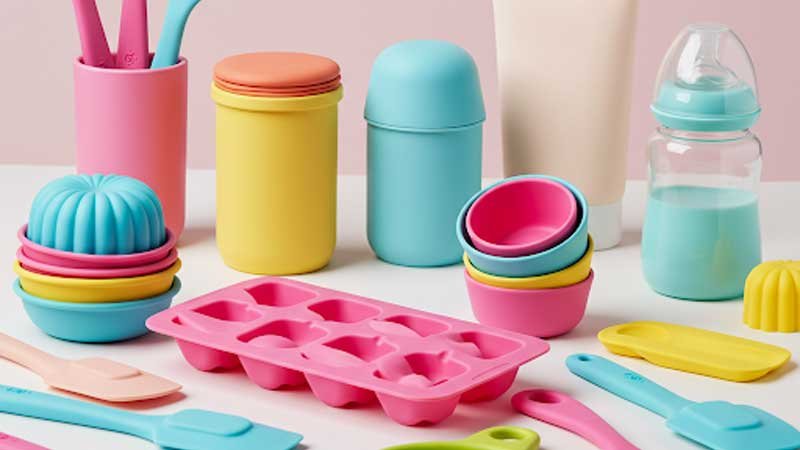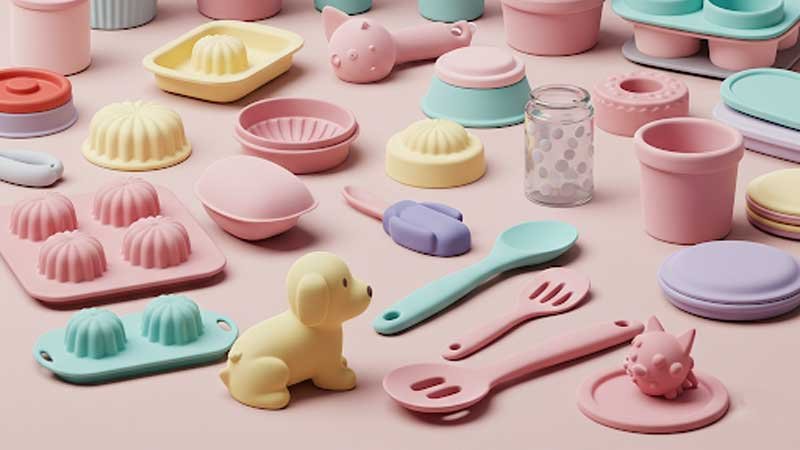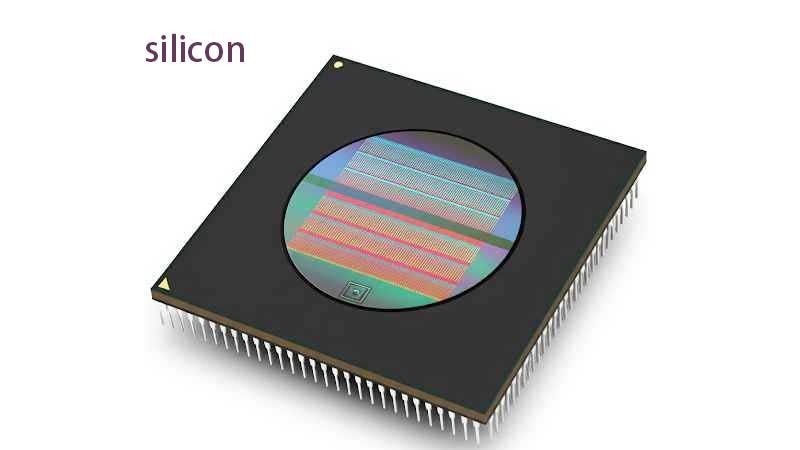Is silicone just a softer form of silicon?
It’s a common assumption — after all, the names sound almost identical, and both are used in high-tech and everyday products. When people see silicone kitchen tools or phone cases and hear about silicon chips in electronics, they often assume these materials must be related or even interchangeable. This confusion is understandable.
But the truth is, silicon and silicone are entirely different materials. They not only differ in structure and composition but also serve completely different purposes.
This article will help you understand the real difference between silicon and silicone—from how they’re made to what they’re used for. By the end, you’ll have a clear understanding of both materials — and you’ll never confuse them again.
What Are Silicon and Silicone?
Silicon and silicone may sound similar, but they are very different.
Silicon (Si):
Silicon is a natural chemical element with atomic number 14. It is the second most abundant element in the Earth’s crust, right after oxygen. In nature, silicon is usually found in compound forms, such as silicon dioxide (like quartz and sand) and various silicate minerals. To get pure silicon, it must go through a complex industrial purification process.
Pure silicon is a key material in the electronics industry. For example, the microchips in our computers and phones are made from high-purity monocrystalline silicon. Its semiconductor properties allow engineers to control electrical flow, making it useful for logic operations and data storage.
Silicone:
Silicone is a man-made polymer. Its backbone is made of alternating silicon and oxygen atoms. Different organic groups are attached to the side of this chain. By changing the side groups, molecular weight, and crosslinking, manufacturers can create many types of silicone. These include liquids, gels, and rubber-like elastomers.
In daily life, we see silicone in many forms. Phone cases, sealing rings, and medical tubing are all common examples. Each of these uses a different type of silicone, designed to meet specific needs.

What Are the Differences Between Silicon and Silicone?
Because of their similar names, silicon and silicone often cause confusion. Many people may wonder: Are they only similar in name? Do they share the same properties? Or is there some connection between them that allows one to replace the other in certain uses?
To answer these questions and clearly explain the essential differences between silicon and silicone, we’ve created the comparison table below. It highlights key aspects such as their elemental makeup, physical properties, and major applications.
By reviewing this table, you can easily see that these two materials are very different in both structure and performance. These differences explain why each plays a unique and irreplaceable role in modern technology and daily life.
| Property | Silicon | Silicone |
| Chemical Nature | A chemical element (atomic number 14) | A man-made polymer |
| Physical State | A solid at room temperature | Can be liquid, gel, or rubber-like at room temperature |
| Hardness & Flexibility | Hard and brittle; difficult to bend | Soft and flexible (for rubber types); gels and liquids vary accordingly |
| Electrical Conductivity | Semiconductor; conductance can be controlled | Insulator in most cases |
| Temperature Resistance | Very high melting point (1414°C) and boiling point (3265°C) | Stable over a wide range, usually from -60°C to 250°C |
| Chemical Properties | Relatively stable at room temperature; reactive at high temperatures | Inert, with good resistance to weather, oxidation, and moisture |
| Key Applications | Semiconductors (chips, transistors, solar cells), alloys, construction materials (like silica) | Sealing and bonding, mold making, healthcare, consumer goods, lubrication, coatings, cosmetics |
How Are Silicon and Silicone Made?
To better understand their differences, let’s take a look at how they are produced.
Production Process of Silicon
Silicon is made from quartz sand.
The sand is mixed with carbon and heated in a furnace at around 1900°C. This produces metallurgical-grade silicon with about 98% purity.
After that, silicon is further purified using chemical methods. Gas reactions help remove impurities and raise purity to over 99.9999%.
Then, special techniques are used to grow silicon into crystal rods. These rods are sliced into thin wafers for use in chips and solar panels.
Production Process of Silicone
Silicone is made from raw silicon.
First, silicon is processed into a chemical called silane.
Then, the silane reacts with other substances to form a soft polymer base.
After that, various additives are mixed in. Some improve hardness, while others adjust flexibility. This allows manufacturers to produce different types of silicone, such as solid rubber or liquid gel.
Finally, the silicone is shaped using molds. It can be pressed, extruded, or injection-molded into products.

What Are the Key Applications of Silicon and Silicone?
Applications of Silicon
Silicon is a basic material. Its main value lies in its semiconductor properties and the stability of its compounds.
It is widely used in semiconductor devices, such as integrated circuits, transistors, and diodes. These applications rely on its controllable conductivity, high purity, stable crystal structure, and good thermal conductivity. Because of these features, silicon devices are compact, energy-efficient, reliable, and highly integrated. They form the foundation of modern electronic equipment.
Silicon is also essential in solar cells. It offers good photoelectric conversion efficiency and long-term stability. It also has a relatively low cost and good resistance to outdoor conditions. These benefits make silicon a key material for clean and renewable energy. It supports wide use in solar panels, which are easy to maintain and can be installed in many locations.

Applications of Silicone
Silicone is known for its flexibility, heat resistance, chemical stability, and biocompatibility. These traits allow it to be used in many industries.
In the medical field, it is used for catheters, artificial organs, and cosmetic implants. It is safe for the human body, has no taste or smell, and can be sterilized easily. Its softness and elasticity also help reduce discomfort and rejection in patients.
Silicone is also common in consumer goods. It is used for kitchen tools, baby products, electronic cases, and watch straps. It is safe for food contact, can handle extreme temperatures, and feels soft and comfortable. It is also durable, slip-resistant, and easy to clean. For example, silicone spatulas are heat-resistant and gentle on cookware. Baby pacifiers are soft and safe. Phone cases offer shock protection, and watch straps feel smooth on the skin.
Conclusion
Although silicon and silicone sound alike, they are completely different materials. Their structures, properties, and uses show just how unique each one is.
Need custom silicone solutions? Our expert team can turn your idea into reality with top-notch materials and precise craftsmanship. Let’s start today.